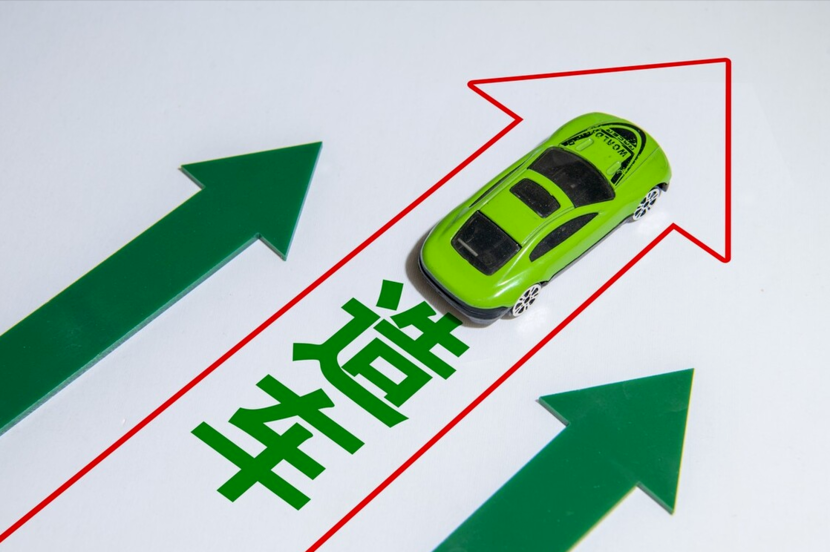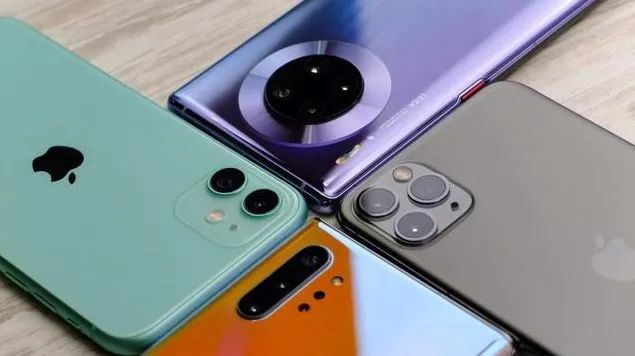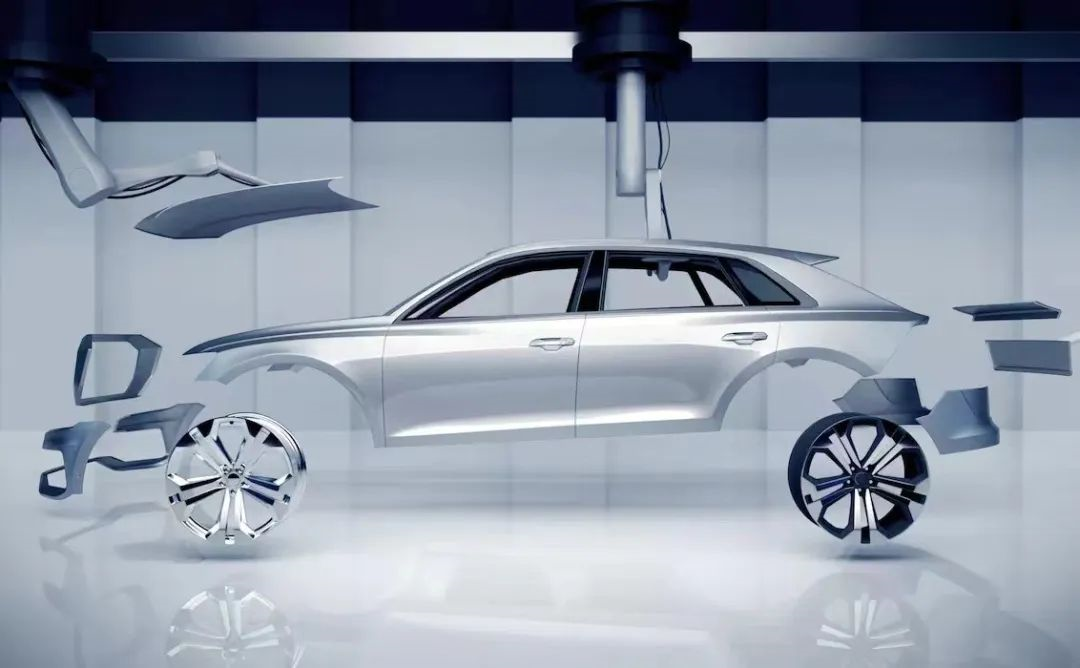Article: Financial Street Lao Li
As September begins, a new wave of “sales reports” has hit the headlines. Some sharp-eyed friends have noticed significant changes in the rankings of new energy vehicle sales. Apart from BYD’s dominance, more and more traditional fuel vehicle enterprises have entered the top ten list, and NIO has started to drop out.
The changes in the secondary market are earlier than in the industry. In several exchange meetings last month, many institutions proposed that the new forces are under pressure, and everyone no longer distinguishes between new and old forces, but calls them new energy vehicle enterprises. Looking ahead to the next stage of the market, the mainstream is focusing on brands such as BYD and Changan, and the influence of the new car-making forces is not as strong as before.
Some friends in the market have put forward the statement “new is no longer new, and old is no longer old.” Perhaps this will be the mainstream for a period of time in the future. Today, Lao Li will discuss with you where the new forces are and what the secondary market is thinking about in terms of “new” and “old”.
Where Is the Innovation of China’s New Car-Making Forces?
Looking back over the 30-plus years of development of China’s passenger car industry, there have been three waves of car-making. The first was the entry of joint ventures such as Volkswagen, Toyota and Nissan into the Chinese market, which opened the era of passenger cars in China; the second was the rapid growth of enterprises represented by Geely and Great Wall, with Chinese brands emerging as major players; and the third is this wave of car-making, with innovative enterprises such as NIO, XPENG and Li Auto entering the automobile industry.
In the past decade or so, we have often referred to enterprises represented by NIO and XPENG as Internet car-making, new car-making forces, new-generation auto companies, and so on, while traditional fuel vehicle enterprises are called traditional forces or old forces, without any unified definition or classification.

According to the industry’s classification of automobile enterprises, they can be divided into “new” and “old” camps. The distinction between “new” and “old” mainly comes from two aspects: one is the founding time and the other is the management philosophy. However, in the past year or so, many people may have felt that the distinction between “new” and “old” is no longer clear.
Traditional fuel vehicle enterprises are continuously becoming “new” in two ways.
Firstly, they are continuously launching new energy vehicle brands. Companies such as Zeekr, IM and Aiways are well known, while other enterprises that have not launched new energy vehicle brands have improved their product lines, such as Mercedes-Benz EQ series, BMW i series, Volvo Recharge series, and even fuel vehicle brand Haval has sounded the horn of transformation to new energy.
Secondly, traditional vehicle companies’ management philosophy is constantly innovating. This management philosophy includes product concepts, sales concepts and service concepts. Traditional vehicle companies’ products are becoming more intelligent, sales are becoming more diversified, service is becoming more humanized, and they are increasingly similar to the new forces.
On the other hand, new car-making forces have encountered innovation bottlenecks in the past two years.In economics, there is a classic rule for companies: “Be ahead when others are not, be superior when others are, and transform yourself when others are.” Three years ago, new forces in the automobile industry were in the “ahead” stage, a year ago they were in the “superior” stage, but now they cannot come up with anything new. As traditional forces catch up, they are all competing in the same market.
In fact, it is very clear that in recent months, new forces in the automobile industry have been challenged in terms of sales volume by traditional car companies. Deliveries have not been impressive, and the three new forces have always been stuck at the bottleneck of 100,000 units, and even declined, while the leading enterprise BYD is thriving.
Behind the sales figures, there are systemic problems, and competition is focusing on products and channels.
In supermarkets in first- and second-tier cities, wherever there is a Tesla, there is Xpeng, and BYD and Volkswagen are also emerging. Last month, Mr. Li visited many urban supermarkets and found that BYD had the largest area, the most models, and the most people.
From a product perspective, it is difficult for anyone who is not a professional engineer to tell which car is from a new force and which is from a traditional force, because the traditional is no longer traditional and the new is no longer new.
Mr. Li’s deepest impression is that many consumers cannot distinguish between new forces and traditional forces, and their car selection criteria are more diverse, putting cars from different brands, different power types, different levels, and different price ranges into the same pool of choices. This also highlights why new and old forces need to “fight” in the same market.
The secondary market is also considering what to do.
The competitive landscape of “fighting” is now reflected in the secondary market as well. Last month, Mr. Li and several investment research friends discussed the trends of Chinese brands in the fourth quarter, and they all coincidentally mentioned a point: “The new forces are no longer new, the old forces are no longer old, and everyone is a new energy vehicle company.”
Taking it a step further, it is difficult for new forces in the automobile industry to lead the next round of the secondary market. The next round of growth of new energy vehicles is a competition of scale. In recent conference calls and events, Chinese domestic brands have been a hot topic.
Two years ago, Xpeng was the hot topic in the industry, and the most sensitive and courageous group of people were the secondary market researchers who dared to recognize and correct their mistakes. Before 2020, Mr. Li’s friends had always recommended partners to invest in Xpeng, but they were unsuccessful. Later, Xpeng went public and their stock price soared. The partner then quickly searched for investment opportunities in the secondary market.
Regarding the proposal that “new forces are no longer new, old forces are no longer old,” Mr. Li shares some thoughts from his friends.An executive at a fund company born in the 1970s who knows nothing about the auto industry often says in presentations that no matter how the auto industry packages its products, consumers will ultimately be most concerned about the design, experience and price, and whoever does it well will have a say. Of course, he is also skeptical of new models such as battery swapping. Old Li believes he represents consumers who don’t understand cars, born in the 1960s and 1970s, and will buy whichever product is better, regardless of how the company packages it.
An 80s-born fund manager who is very familiar with cars and a brand enthusiast, believes that previously, consumers differentiate brands based on whether they are new energy vehicles or fuel vehicles. Now, many companies have started making electric cars, and in the future, people will not differentiate brands based on power type. When Mercedes-Benz, BMW, and NIO are all in the supermarket, the standard for choosing a car will become brand personality and product attributes.
Just like the mobile phone industry, originally people differentiated between feature phones and smartphones, but later Apple, Xiaomi, and Huawei competed on the same stage. New energy cars will also have a similar industry structure. In the future, some brands will represent autonomous driving, some brands will represent economy, some brands will represent service experience, and some brands will represent national pride.

The industry is also looking for this change. At a recent Volvo exchange meeting, a Volvo leader raised a point: Traditional ≠ Conventional. Traditional means heritage in English and mainly talks about the inheritance of good experience. Conventional means conservative, which is not a positive term in Chinese.
The current trend in public opinion is that the traditional is conservative, and fuel vehicle companies are traditional companies. But from the literal meaning, we can see that tradition is not necessarily bad. Chinese traditional culture has its essence, and Chinese fuel vehicle companies have their essence, such as product reliability, etc., while conservatism is subjectively pejorative. The secondary market is clearer in this regard, and fuel vehicle companies are not conservative, but are accelerating their pace of catching up.
Perhaps for a long time in the future, there will always be talk of new forces in the industry and media circles, but Old Li believes that the “new forces” rhetoric will gradually fade in the secondary market over the next one or two years, and will be replaced with new energy vehicle companies. After three or four years of prosperity, the “two families” will become one family again.
Different starting points, same destination
The Chinese car market has similarities to the real estate market. The problem that the industry is currently facing is that the automotive market peak has already occurred in 2018, and in the case of economic downturn, there has been little growth in the past two years, and the large auto market (fuel vehicles + new energy vehicles) is in a stagnant state. Everyone now thinks that there is more incremental growth in new energy vehicles, but this is essentially replacing the fuel vehicle market, not net incremental growth.
In such a market environment, competition among enterprises will become more intense. Currently, the market has shown an irreversible trend, that is, users are gradually turning to new energy vehicles from the choice between purchasing fuel vehicles and new energy vehicles. In this situation, what is the core competitiveness of enterprises?

Brand is an important factor that influences user purchase. For example, in the past, when people mentioned luxury brand, they thought of BBA. Now, when they talk about new energy vehicles, they think of Tesla and NIO. In the early stage of new energy vehicle development, the brand value of traditional vehicle companies cannot be completely transferred to the electrification era, and consumers do not follow the original perception of the brand in the market.
In the early stage of the development of a new product, pioneers have advantages, such as Apple in the era of intelligent phones and Tesla in the era of electric vehicles. From a business perspective, these “phenomenal” enterprises are traffic IPs that do not need to invest too much in advertising to get high attention, and later entrants such as NIO, Ideal and XPeng are also similar. In addition, in terms of channels, the supermarket sales model of new forces has a strong effect on shaping brand image.
In comparison, fuel vehicle companies will face more pain in the early stage of new energy vehicle development, including BBA and Volkswagen, which face difficulties in transformation, because these brands are not on the “experimental” list of early consumers.
In the growth stage of the industry, it is found that “traditional” brands have begun to increase. BYD can proudly dominate the market with a monthly sales volume of 170,000, Guangzhou Automobile Aeolus can surpass NIO with a monthly sales volume of more than 20,000, and SAIC-GM-Wuling can seize a certain market share with the Hongguang MINIEV. Volkswagen steadily rises after initial setbacks and regains its “status”.
New forces have also realized that the development dividend period has passed. He XPeng said that we have not yet emerged from the most dangerous time, which is true. The automobile industry is an industry that survives on “volume”. The goal of Geely Holding Group in the past was to sell 2 million vehicles per year because Geely believed that 2 million vehicles were the “bottom line” of an automobile group. However, many new energy vehicle companies have not only entered the “safe zone”, but even stayed on the “life and death line”.

New forces are gradually transitioning towards traditional methods. Tesla and XPeng are moving from direct sales to dealer models (Tesla’s after-sales model is starting to adopt franchise forms) to strengthen their back-ends. One is to reduce the cost of supermarkets, and the other is to improve transaction efficiency.Li mentioned that the popular belief now is that new energy vehicles will move from the hardware era to the software era, that is, the so-called “software-defined cars,” which is a fact. In the future, for a long time, cars will be defined by hardware and software together, just like smartphones, where it is not realistic to have only software without hardware.
New forces have always been saying that they make money by selling software and not hardware, which is a paradox. In fact, both the capital and the industry understand that current software does not make money. For the next three to five years, hardware remains the most important source of profit. From this perspective, whether it is a fuel vehicle or a new energy vehicle, the essence of everyone’s profits has not changed.
Therefore, from the bottom-up logic of business profitability, there is no difference between new forces and old forces. After all, in China, surface-level things can be imitated. From this perspective, the new forces and old forces have followed the same path, with only the “old forces” lagging behind.
This article is a translation by ChatGPT of a Chinese report from 42HOW. If you have any questions about it, please email bd@42how.com.
